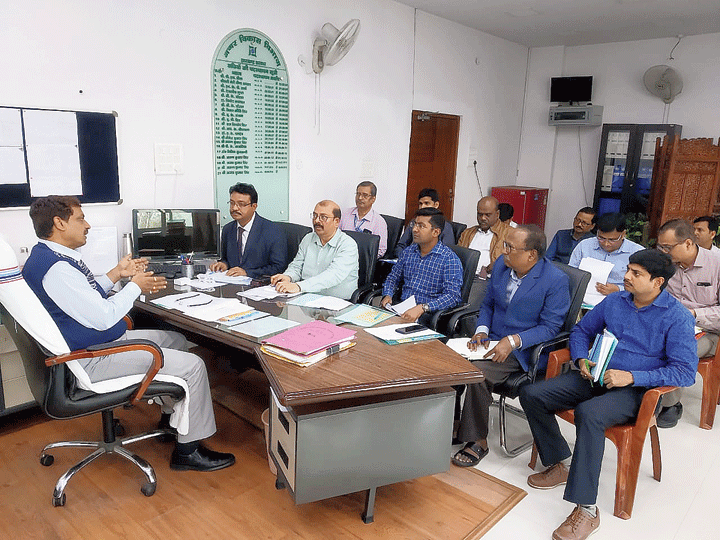The state urban development department seems keen to complete the smart roads in the capital within the stipulated deadline of 2021-end.
In a review meeting held at Project Bhavan in Ranchi on Wednesday, state urban development secretary Ajoy Kumar Singh directed Delhi-based Rodic Consultants to complete the markings on the smart roads by November 25.
“The consultant has been directed to complete the markings on at least two smart roads by November 25 and on the proposed flyovers within the stipulated date. We would like to complete the project by the end of 2021,” said Singh.
Sources, who attended Wednesday’s meeting, said Singh specifically emphasised on the markings on the smart road stretch between Ranchi Airport and Birsa Chowk and from Birsa Chowk to Raj Bhavan.
“The inspection of the markings will help the authorities get an estimate of the length and width of the utility ducts, traffic junctions and pathways and whether they were being built according to the specific parameters,” Jharkhand Urban Infrastructure Development Company Limited (Juidco) spokesperson Ashutosh Kumar Singh said.
“At the moment, a trench has been dug up and work is in progress on the two smart roads. Alterations can be done after inspecting the markings on these roads to avoid problems in future,” he added.
The Juidco spokesperson said the consultant had also been directed to start marking the remaining two smart roads — the 2.7km stretch between Raj Bhavan and Kantatoli Chowk (via Circular Road, Lalpur) and 7.40km stretch between Raj Bhavan and Booty Mor — soon after the inspection of the first two stretches.
Construction on the 2.55km long Birsa Chowk-Airport stretch(Rs 42.52 crore) and 8.85km long Raj Bhavan-Birsa Chowk stretch (Rs 162.7 crore) is taking place on a war footing.
However, work is yet to gather momentum on the remaining two smart roads between Raj Bhavan and Kantatoli Chowk (Rs 92.99 crore) and between Raj Bhavan and Booty Mor (Rs 188 crore).
The much touted smart roads will have underground ducts for drains and electrical and optic fibre cables besides gas pipelines. Each flank of the road will vary between 7m and 9m, while the width of pavements and cycling tracks will be between 2.5m and 4m.
The common ducts will do away with the need for roads to be dug up frequently for laying utility cables and pipes, thereby reducing the incidence of traffic snarls.
The smart road will have 25 traffic junctions with integrated traffic management system, which will make traffic signals and speed violations easy to detect. The system will also have adaptive traffic control (in which the signal timing changes in accordance with the traffic density), CCTV surveillance, public announcement system, variable message signboards (informing public of traffic snarls and other important information) and environment monitoring system (display of real time environment data on air quality and weather at select locations).
The urban development secretary also directed the completion of Kantatoli flyover service lane by the end of this month besides asking the agency to complete the markings for the proposed flyovers at Lalpur, Kutchery Chowk, Argora Chowk, Dindayal Chowk and Karamtoli Chowk at the earliest.











